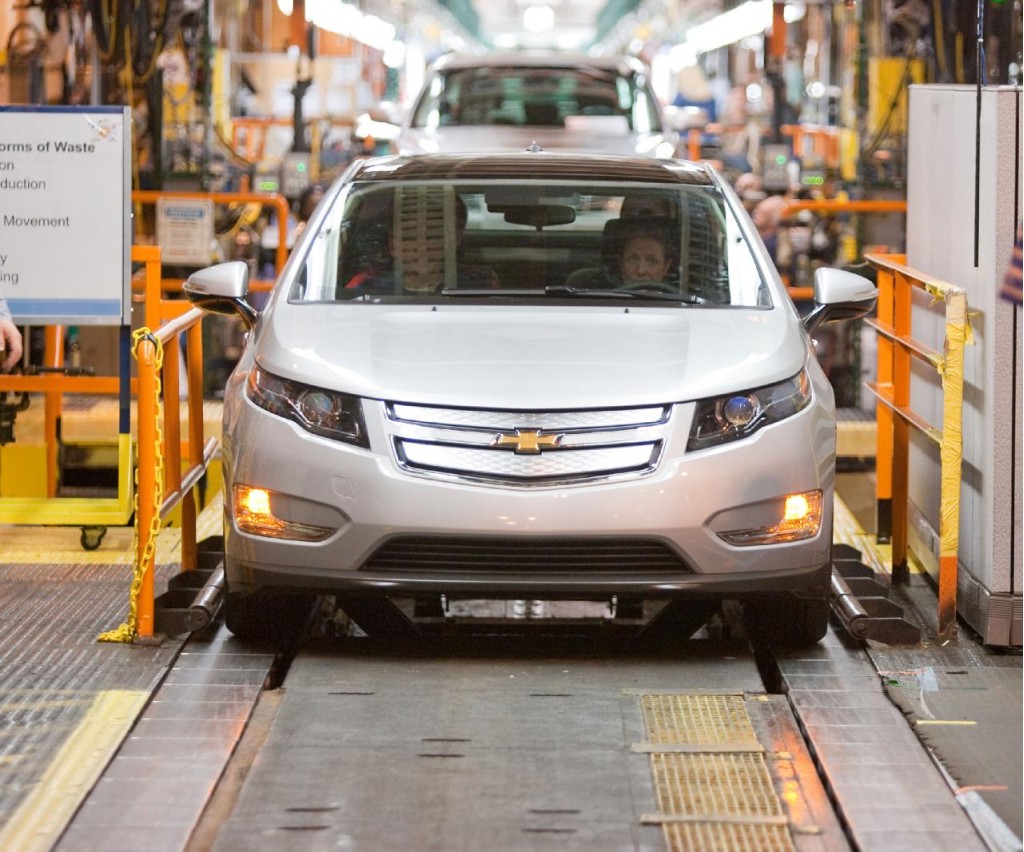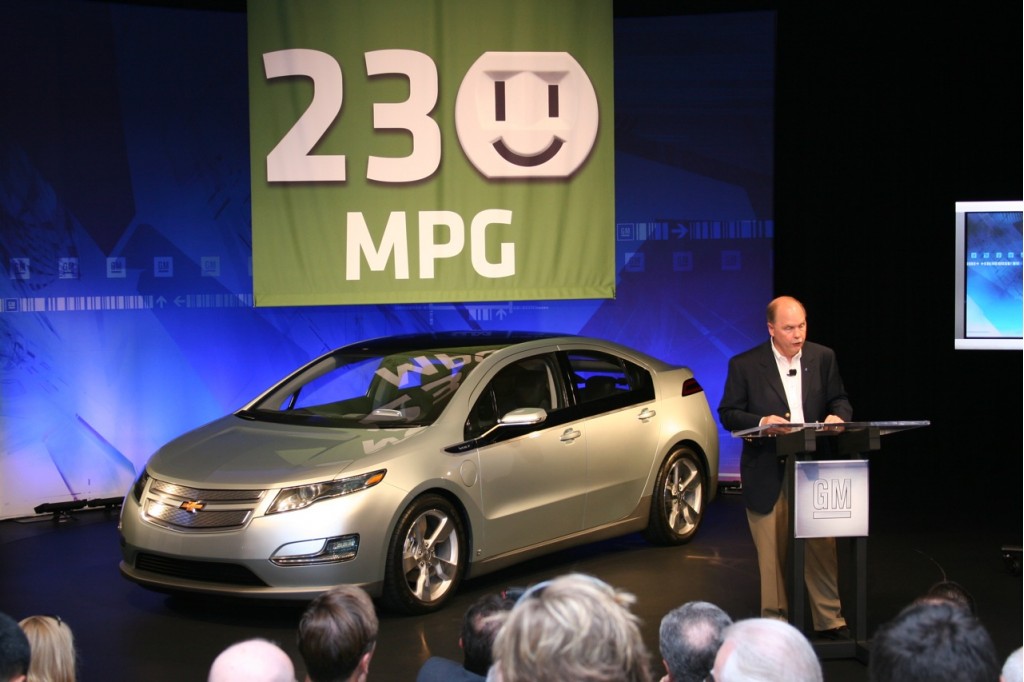Everything old is new again.
Or so goes the saying.
While the 2011 Chevrolet Volt will be the first electric vehicle with a range-extending engine to be built in volume (the first pre-production Volt rolled off the line on March 31), it's hardly the first one ever.

Daihatsu Dash concept car, 1993

First 2011 Chevrolet Volt built on production tooling at Detroit Hamtramck plant, March 31, 2010

2011 Chevrolet Volt

Lohner-Porsche series hybrid
We'll ignore for a moment the Lohner-Porsche of the early 1900s (designed by Ferdinand Porsche, later to found the famous sports car company).
Instead, let us travel back in time to 1993. Just to get you situated, that was the year when Bill Clinton was inaugurated as president of the United States, the best-selling album of the year was the soundtrack to The Bodyguard, and gasoline cost $1.16 a gallon.
It's also the year that Japanese small-car maker Daihatsu showed its DASH 21 concept car at the Tokyo and Frankfurt Motor Shows. The DASH name stood for Daihatsu Autocharging Series Hybrid (as distinct from a parallel hybrid like the 2010 Toyota Prius).
The front wheels of the four-seat Dash 21 were driven by a 20-kilowatt electric motor, powered by a T-shaped nickel-metal-hydride battery pack mounted in the tunnel and under the rear seats--just like the 2011 Volt.
When the batteries ran low, a rear-mounted 660cc three-cylinder gasoline engine would start up, running at a constant speed to power an 8-kilowatt generator that recharged the battery.
The Dash 21 offered about 25 miles of electric range, and a total range of 280 miles. Top speed was given as 75 miles per hour.
Just-Auto writer Mark Bursa managed to dredge up an article he'd written on the car for Automotive International magazine, which concluded, “The Dash 21 features technology which is close to being used on mass-production vehicles."
Well, not quite. Bursa also notes that Daihatsu's owner, Toyota, set up its own "G21" project around the same time to develop a hybrid vehicle for the 21st century.
In 1995, the concept for what became the Toyota Prius was unveiled at the Tokyo Motor Show. And we all know how that experiment turned out: The Prius is the world's highest volume hybrid, with total production of three generations since 1997 now nearing 2 million.
Daihatsu showed a further series hybrid concept, the Move EV-H, in 1998. This time, the 570cc gasoline twin that powered a 6-kW generator was mounted up front, above a 19-kW electric drive motor, just like the Volt's layout.
The Move EV-H generator recharged a rear-mounted bank of 24 lead-acid batteries, rather than the more advanced nickel-metal-hydride pack used in the Dash 21. But once again, the world paid little attention to Daihatsu's series hybrid.
The 1993 Dash 21 disappeared into dusty archives, and it would take a further 18 years before series hybrid vehicles would appear in dealerships.
It must be galling to Daihatsu's valiant engineers that they will do so in the United States, rather than Japan.
[Just-Auto (requires subscription); image from findararecar]













